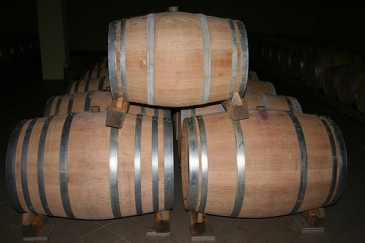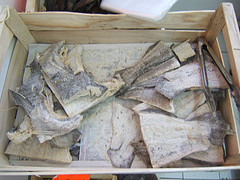There is one man that is accredited with changing the way that the world ate and that is the Admiral of the Ocean Seas, Christopher Columbus. His discovery of the New World is celebrated on the second Monday of October each year and this year it falls on the actual date of October 12th when he first sailed into the Bahamas.
He was born in Geneva in 1451 which is now part of Italy but was then its own independent state. Eventually moving to Spain he managed to convince Spanish royalty to fund his ill conceived voyage of discovering new trade routes to the east by going west.
Columbus sailed from Spain on August 3rd 1492, calling in to top up provisions with water and Gomera goat’s cheese at the Canary Isles on September 6th. Taking enough provisions onboard for the 52 crew members to last the trip, which was expected to take at least a year, must have been a logistical nightmare for the ship’s Steward. Very soon any fresh fruit and vegetables brought along would have either been consumed or rotted, leaving just dried legumes of chickpeas, lentils and beans.

Live pigs and chickens were taken on board ships of the day for slaughtering during the journey to provide fresh meat as opposed to the pickled or salted beef and pork in storage. Fish was also taken along in the form of dried salt cod and salted and barreled sardines and anchovies. Plus when the sea was calm the sailors could catch fresh fish and cook them up for dinner. Provisions for the sailors also included olives kept in olive oil in earthenware jugs, the oil was also used for cooking. Sacks of salted flour were included in this inventory for the crew to ‘bake’ bread in their fires. Vinegar, molasses, honey, almonds and raisins were also taken along in the hold for their keeping qualities and along with rice and sea biscuits that was pretty much all that was available. There was a ship’s Cooper who was in charge of keeping the barrels tight to store the food and to avoid brine leaking out from the meat casks, as this brine could then ruin any stored dry goods.

One hot meal was served each day cooked on a fogon, a basic firebox filled with sand and then firewood. A cauldron would be suspended above the fire and the food was boiled or stewed before being served in one large communal bowl. The sailors had no cutlery, just their own knife which could be used for cutting up larger pieces of meat, alongside hacking into rope during their day job.
They took fresh water on board with them but of course that would soon become stagnant and the only other alternative to drink was the red wine. The wine had to be high in proof for preservation so with a strong 14% alcohol or more it is surprising that they managed to keep their sea legs and actually arrived in the Bahamas at all.